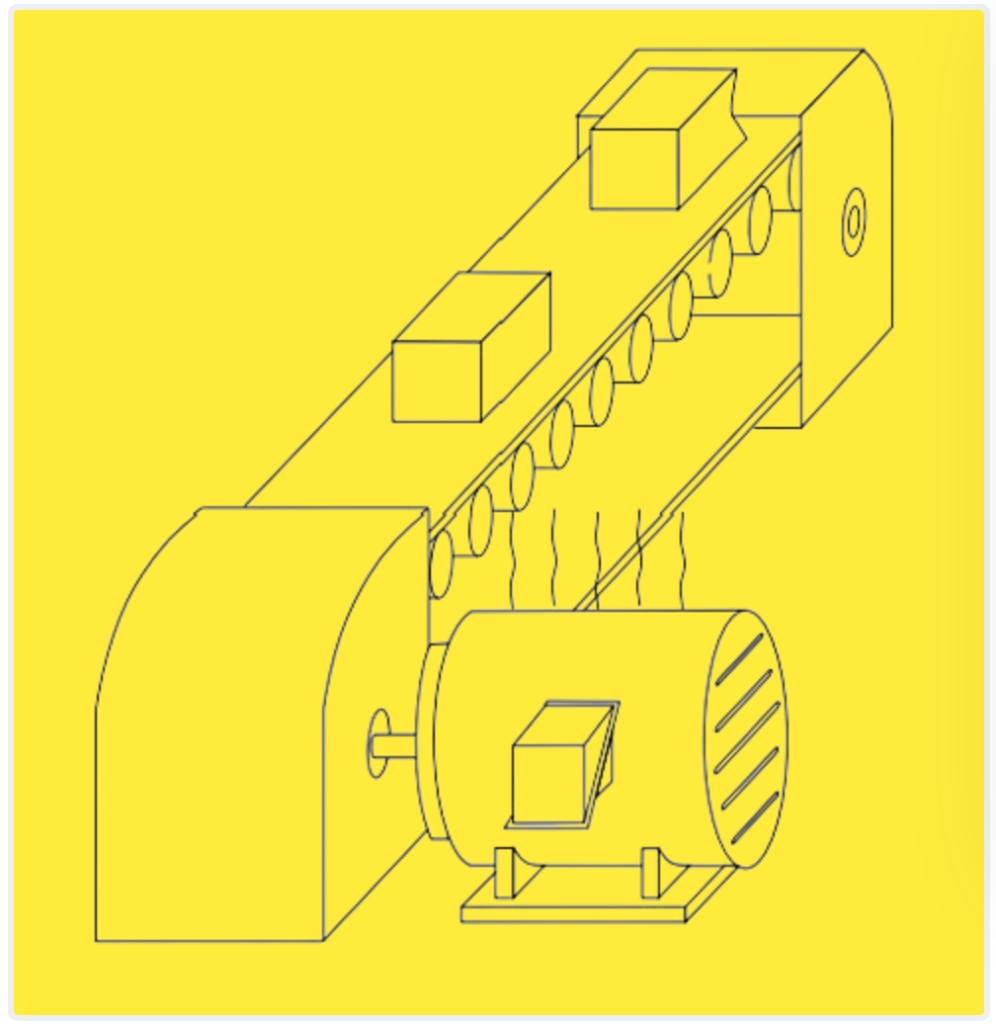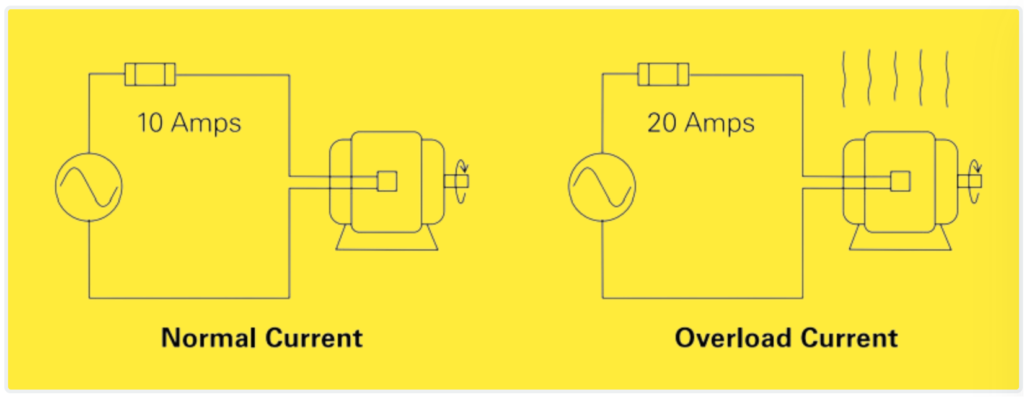An electrical overload occurs when the current flowing through a circuit exceeds its designed capacity. This can happen due to too many appliances or devices drawing power from the same circuit simultaneously. It can lead to overheating of wires and components, posing a fire hazard and damaging electrical equipment.
What is an Electrical Overload?
Understanding Current and Temperature
When electricity passes through a wire, it naturally creates heat because of resistance. The more electricity flowing, the hotter the wire gets. Too much heat can harm electrical parts. That’s why wires have a limit to how much current they can carry safely, called ampacity. Overcurrent protection gadgets are used to stop wires from carrying too much current. Thermal overload relays specifically protect the wires inside motors. They make sure the current stays at a safe level to prevent wires from getting too hot and causing damage.

When there’s too much electric current flowing, it’s called overcurrent. According to the National Electrical Code®, overcurrent means any current that goes beyond the rated capacity of equipment or the maximum capacity of a wire. This excess current can happen because of an overload, a short circuit, or a ground fault.
When Short Circuits are Happened?
When two bare wires touch, it creates a short circuit. During a short circuit, the resistance decreases to almost zero. This can result in a surge of current that’s thousands of times higher than usual.
Ohm’s Law explains the connection between current, voltage, and resistance. For instance, a 240-volt motor with 24 ohms of resistance typically draws 10 amps of current.

But when a short circuit happens, the resistance plummets. If the resistance drops to 24 milliohms, the current shoots up to 10,000 amps.

Such a massive current generates a lot of heat, which can severely damage connected devices and wires. It’s crucial to cut off this dangerous current immediately when a short circuit occurs.
Electrical Overload Conditions
An overload happens when a circuit or electrical device is pushed beyond its capacity. For instance, if a motor designed to handle 10 amps starts drawing 20 or 30 amps, it’s in an overload state. Imagine a scenario where a package gets stuck on a conveyor belt, making the motor work harder and draw more current. As the motor draws more current, it heats up. If the issue isn’t fixed or the circuit isn’t shut down by the overload relay, the motor could get damaged quickly.

Temporary Overload Due to Starting Current
Electric motors are categorized based on the amount of current they draw when starting up, known as the Starting Current, compared to their Full Load Current rating when operating normally. When motors start, they typically draw more current than their full-load rating. Motors are designed to handle this overload for a short time. Many motors need up to 6 times (600%) their full-load current to start, while newer, high-efficiency motors may require even more. As the motor speeds up to its operating level, the current decreases rapidly. The time it takes for a motor to reach its operating speed depends on its characteristics and the load it’s driving. For instance, a motor might need 600% of its full-load current and take 8 seconds to reach operating speed.

Electrical Overload Protection
Fuses and circuit breakers serve as safety measures to protect circuits from short circuits, ground faults, and overloads. If a short circuit occurs, a properly sized fuse or circuit breaker will quickly cut off the circuit.
However, there’s a challenge when applying fuses and circuit breakers in motor control circuits. The protective device must allow the motor to briefly exceed its full-load rating during startup. Otherwise, the motor would trip every time it starts. In such cases, a motor might face an overload condition that doesn’t draw enough current to trigger the fuse or circuit breaker. This could lead to overheating and damage to the motor.
To address this issue, overload relays are used, as explained in the following section.
